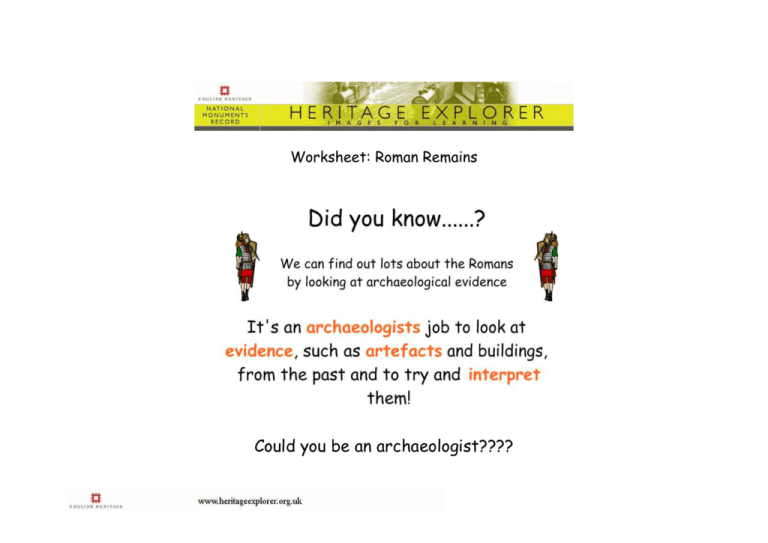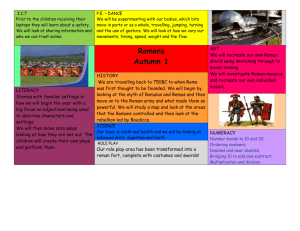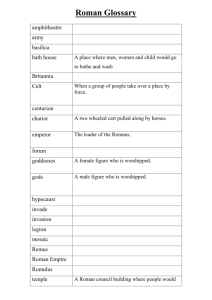Worksheet: Roman Remains
advertisement

Worksheet: Roman Remains Could you be an archaeologist???? Step 1: Learn to speak 'archaeologist' If you want to be an archaeologist you need to learn some new words: Archaeology: The study of the lives of people in the past Evidence: Information to support an idea/interpretation Artefact: Any object made or changed by people Interpret: To try and explain what something means Step 2: Use evidence to answer questions Q: Did the Romans settle in Britain? Look at the pictures below - they are all types of archaeological evidence. (You can use the glossary below to help you understand the evidence) Choose 3 pictures that you think could be used as evidence that the Romans settled in Britain. Copy and paste (or cut out and stick) your pictures into the table provided below Remember to give your reasons!!! Discuss your choices in pairs and/or as a class Roman Remains: Recording Sheet Evidence of Roman settlement Picture 1 Picture 2 Picture 3 I chose this picture because….. The Evidence The remains of a Roman fort called 'Housesteads' in Northumberland A mosaic found in Lullingstone Roman villa in Kent Gaming counters and dice excavated from Lullingstone Roman villa in Kent Old Kent Road in London is built on top of a Roman road - this is what it looked like in 1900 Reconstruction drawing of a Roman fort called 'Wallsend' in Tyne & Wear The remains of Lullingstone Roman villa in Kent The remains of a Roman villa at Chedworth in Gloucestershire Remains of the hypocaust (under floor heating) at Chedworth Roman villa in Gloucestershire Glossary Archaeology: The study of the lives of people in the past Artefact: Any object made or changed by people Evidence: Information to support an idea/interpretation Fort: A strong place and/or a permanent army post Gaming Counter: Objects used to play games (such as draughts, backgammon etc) Hypocaust: Roman under floor heating system. The floor is supported on pillars and hot air from a furnace is circulated underneath to heat a house or bath Interpret: To try and explain what something means Mosaic: A picture made from lots of small tiles, the Romans called these small tiles tesserae Reconstruction Drawing: A drawing formed by piecing together bits of evidence Villa: A large country house built by wealthy Romans This activity relates to the Roman Remains: Evidence Teaching Activity








